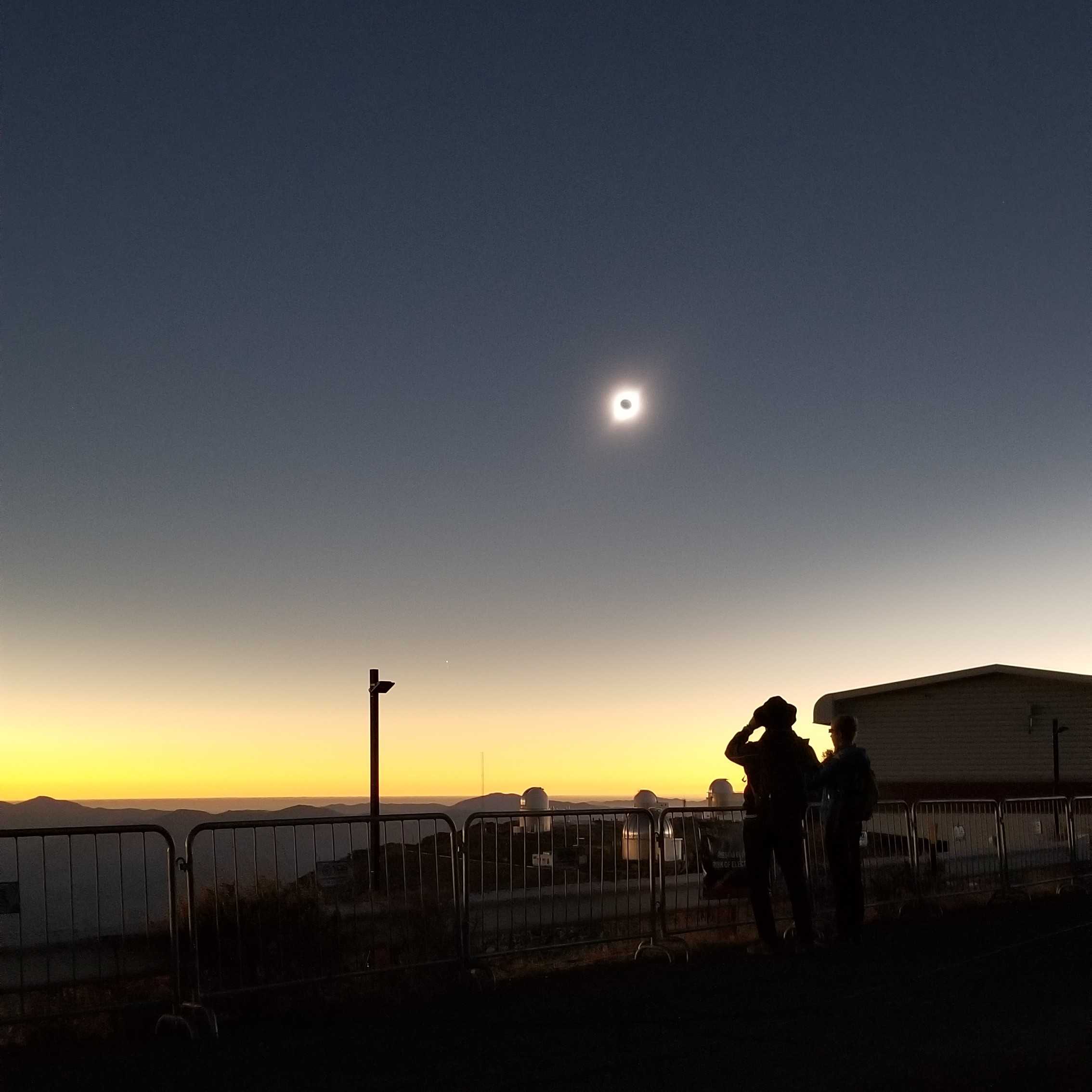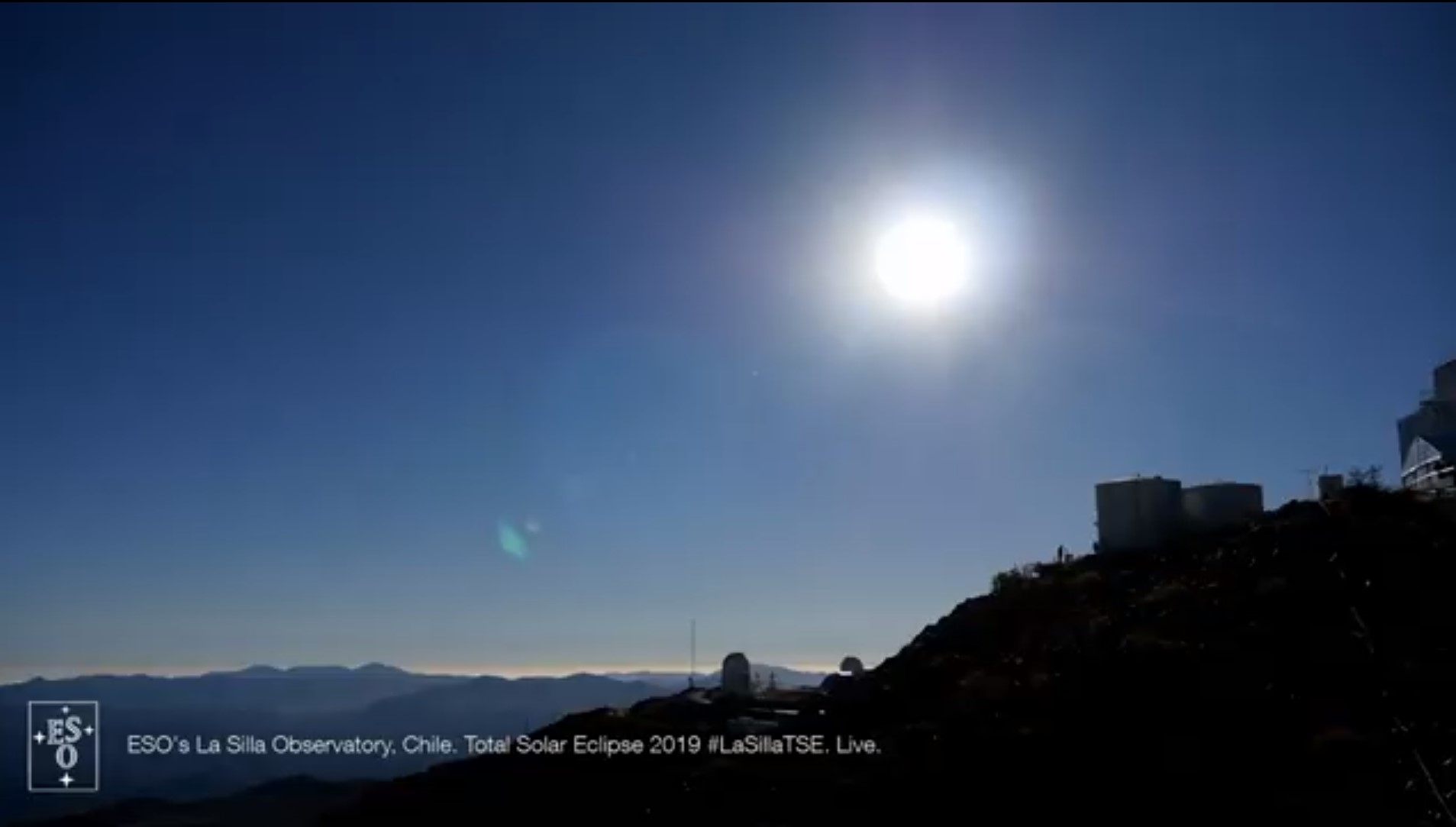Total Solar Eclipse Thrills Skywatchers Across South America
LA HIGUERA, CHILE — A spectacular total solar eclipse passed through South America today (July 2), thrilling thousands of eager spectators in the path of totality while millions of others enjoyed a partial solar eclipse throughout the continent.
Today's solar eclipse was the first to grace our planet since the Great American Total Solar Eclipse, which crossed the continental United States on Aug. 21, 2017. While both of these were coast-to-coast eclipses, the path of totality for today's eclipse covered a much shorter stretch of land, beginning near La Serena, Chile, and ending just south of Buenos Aires, Argentina.
Locals, tourists and "eclipse chasers" flocked to the line of totality today to catch up to 2.5 minutes in which the moon completely blocked out the sun. As the moon cast its shadow on Earth, daytime temporarily turned into twilight, creating the illusion of a 360-degree sunset in places along the line of totality. The moon's shadow painted the skies with deep shades of purple and orange, and the darkness caused temperatures to drop by several degrees in the already-chilly region.

Totality made its first landfall over South America near the city of La Serena, Chile, at 4:39 p.m. EDT (2039 GMT), about 1 hour and 17 minutes after the partial phase began there. But the eclipse itself actually started a few hours earlier over the Pacific Ocean.
The partial phase first became visible over the South Pacific at 12:55 p.m. EDT (1655 GMT), but it didn't have much of an audience — aside from any marine life, boats, airplanes or "eclipse chasers" who traveled to any of the remote islands in its path. The first island to see the total solar eclipse was Oeno Island, where totality began at 10:24 a.m. EDT (1424 GMT) and lasted 2 minutes and 53 seconds.
How long totality lasts depends on how close one is from the center of the path of totality. The longest duration for this eclipse was a whopping 4 minutes and 33 seconds, but this also occurred in the middle of the Pacific Ocean, where it's unlikely that anyone was around to witness it. In South America, the total phase of the eclipse was much shorter, lasting no longer than about 2.5 minutes.
Although the total eclipse did not reach South America until late afternoon, many of the locals kicked off their eclipse festivities well before dawn. On Route 5, the highway between La Serena and La Silla Observatory, hundreds of cars had already started lining up on the roadside by sunrise. While traffic along the highway wasn't too jammed up, most exit ramps were overflowing with cars. Groups of skywatchers had set up camp on medians and shoulders, complete with tents, tables, chairs and even grills. Along the road to La Silla, several astrophotographers were setting up cameras and telescopes to get ready for the eclipse.
Get the Space.com Newsletter
Breaking space news, the latest updates on rocket launches, skywatching events and more!
The last time South America witnessed a total solar eclipse was on July 11, 2010, when the moon's shadow crossed over just the southernmost tip of the continent. And lucky skywatchers in this region will be treated to yet another total solar eclipse on Dec. 14, 2020. That eclipse will take a very similar path across the southern portion of South America.

On average, total solar eclipses occur about once every 18 months. But there are two other kinds of solar eclipses that happen several times a year: partial solar eclipses and annular solar eclipses. During a partial solar eclipse, the moon only passes over a portion of the sun's disk and does not block the sun from view. An annular eclipse, commonly referred to as a "ring of fire" eclipse, happens when the moon is directly in front of the sun but is too far away from Earth in its elliptical orbit to cover the whole sun.
The next solar eclipse will be an annular eclipse on Dec. 26, 2019; it will be visible over Africa, Asia and the Middle East. In the United States, the next solar eclipse will be another annular eclipse on Oct. 14, 2023. After that, another "Great American Total Solar Eclipse" will cross the continental United States on April 8, 2024.
Editor's Note: If you captured an amazing photo or video of the total solar eclipse and would like to share it with Space.com's readers, please send your images with comments to spacephotos@space.com.
- Here Are the Most Amazing Photos of the 2017 Total Solar Eclipse
- Total Solar Eclipse 2024: Here's What You Need to Know
- The Most Amazing 2017 Total Solar Eclipse Photos Taken From Space
Email Hanneke Weitering at hweitering@space.com or follow her @hannekescience. Follow us on Twitter @Spacedotcom and on Facebook.
Join our Space Forums to keep talking space on the latest missions, night sky and more! And if you have a news tip, correction or comment, let us know at: community@space.com.

Hanneke Weitering is a multimedia journalist in the Pacific Northwest reporting on the future of aviation at FutureFlight.aero and Aviation International News and was previously the Editor for Spaceflight and Astronomy news here at Space.com. As an editor with over 10 years of experience in science journalism she has previously written for Scholastic Classroom Magazines, MedPage Today and The Joint Institute for Computational Sciences at Oak Ridge National Laboratory. After studying physics at the University of Tennessee in her hometown of Knoxville, she earned her graduate degree in Science, Health and Environmental Reporting (SHERP) from New York University. Hanneke joined the Space.com team in 2016 as a staff writer and producer, covering topics including spaceflight and astronomy. She currently lives in Seattle, home of the Space Needle, with her cat and two snakes. In her spare time, Hanneke enjoys exploring the Rocky Mountains, basking in nature and looking for dark skies to gaze at the cosmos.









